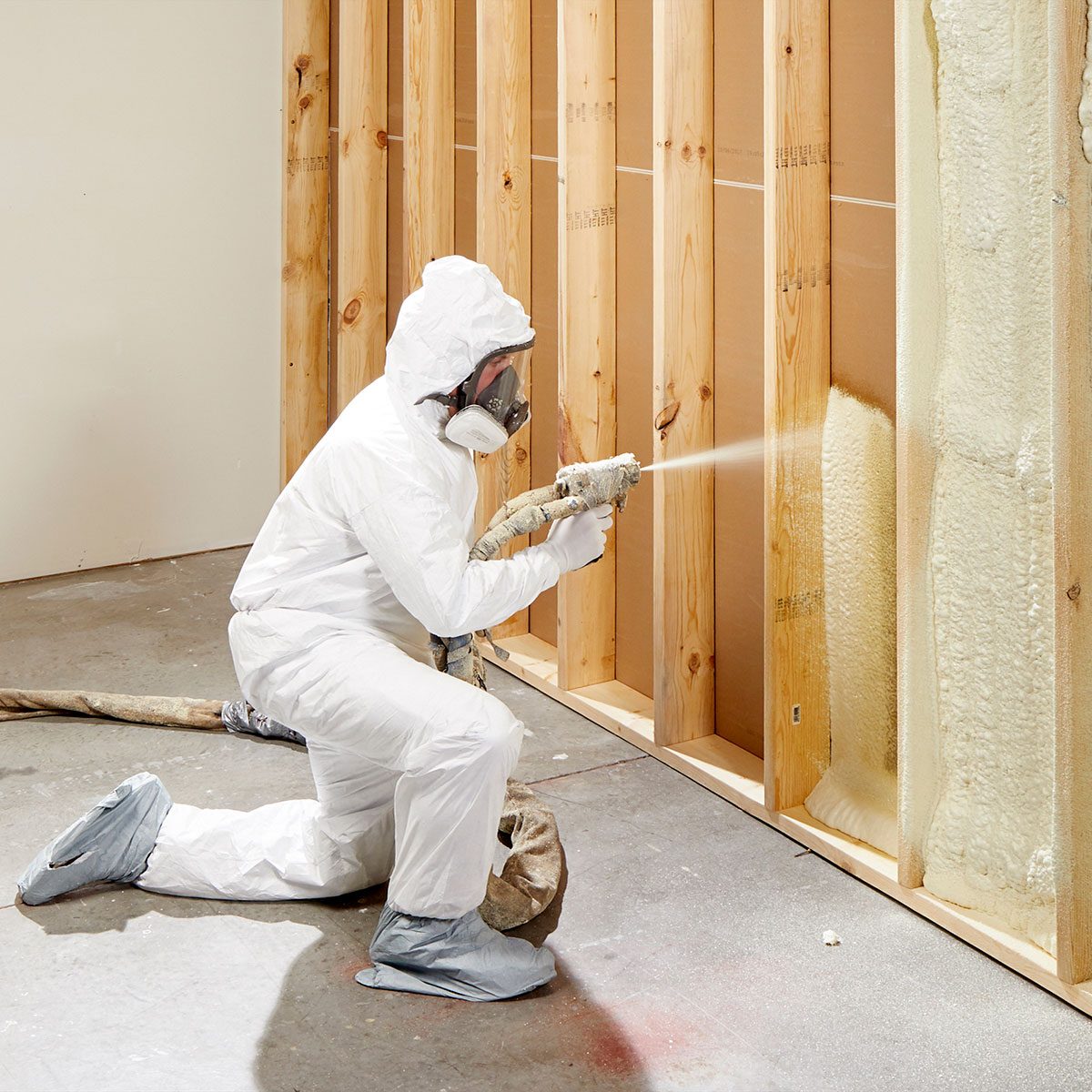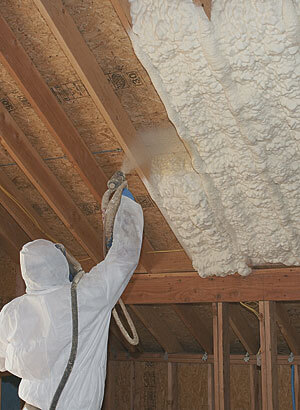Tips for Preserving Your Spray Foam Insulation for Long-Term Performance
Tips for Preserving Your Spray Foam Insulation for Long-Term Performance
Blog Article
Spray Foam: The Ultimate Remedy for Air Sealing and Insulation
Spray foam insulation has actually become a leading remedy for efficient air sealing and thermal insulation, offering a special combination of homes that establish it aside from standard methods. Its capacity to expand and fill up spaces makes it specifically efficient in stopping air leak, which can dramatically impact energy performance. Recognizing the full scope of its benefits, installation processes, and comparisons with other insulation kinds is crucial for making informed decisions. As we check out these elements, the ramifications for both new constructions and retrofits end up being significantly significant. What factors should influence your choice?
What Is Spray Foam?
Spray foam is a flexible insulation material that combines the concepts of air sealing and thermal resistance to enhance power effectiveness in structures. Made up mostly of polyurethane or various other similar substances, spray foam is applied as a liquid that broadens upon contact with surface areas, producing a solid, continuous layer of insulation. This one-of-a-kind property permits it to load voids, fractures, and voids that typical insulation materials might neglect, giving a superior air seal.
There are two main types of spray foam: open-cell and closed-cell. Open-cell spray foam is lighter and a lot more flexible, using excellent sound absorption and a reduced R-value per inch - Spray Foam. In contrast, closed-cell spray foam is denser, supplying a greater R-value, wetness resistance, and added architectural honesty to building elements
The application procedure normally involves specific tools, making sure a seamless application that sticks to numerous substratums, consisting of concrete, steel, and timber. This versatility makes spray foam suitable for both new building and constructions and retrofitting existing structures. Its capacity to create an airtight barrier considerably adds to minimizing energy consumption and enhancing indoor air top quality, thus making it a preferred selection among home owners and building contractors alike.
Benefits of Spray Foam Insulation
One of the most substantial benefits of spray foam insulation is its outstanding capacity to develop a continuous air barrier, which efficiently minimizes energy loss. Unlike standard insulation products, spray foam broadens to load splits and gaps, making certain that air leak is considerably minimized. This particular not just boosts power performance but also leads to lower energy costs with time.
Additionally, spray foam insulation provides superior thermal resistance, adding to an extra secure interior atmosphere. Its high R-value per inch enables effective insulation in confined rooms, making it excellent for attic rooms, walls, and crawl spaces. Furthermore, the moisture-resistant properties of spray foam help protect against mold and mildew and mildew growth, promoting much healthier living conditions.
One more essential advantage of spray foam insulation is its sound-dampening qualities (Spray Foam). It effectively lowers sound transmission between spaces, creating a quieter and extra comfy home environment. The toughness of spray foam likewise stands out, as it does not droop or settle with time, keeping its performance throughout its life-span
How Spray Foam Functions
Understanding just how spray foam insulation works is essential for valuing its performance in air securing and thermal resistance. Spray foam insulation contains two main parts: isocyanate and polyol resin. When these parts are combined, they go through a chain reaction that triggers the product to expand swiftly, developing a dense foam that fills spaces, tooth cavities, and cracks.
As the foam broadens, it adheres to surfaces, forming view website a closed seal that significantly decreases air infiltration. This particular makes spray foam insulation very reliable at protecting against drafts and dampness penetration, which can cause power loss and damages with time. Additionally, the closed-cell variation of spray foam uses premium thermal resistance as a result of its inflexible framework, effectively reducing warm transfer.
The special homes of spray foam enable it to satisfy irregular surfaces, making sure thorough insurance coverage and a seamless obstacle. As a result, spray foam insulation not only enhances power effectiveness but likewise adds to improved indoor air high quality by minimizing the build-up of pollutants and allergens. Ultimately, understanding the auto mechanics behind spray foam underscores its duty as a superior choice for insulation and air securing in both industrial and residential applications.
Installation Process Summary

Prior to setup, the area must be properly cleaned and prepped, ensuring that surface areas are devoid of dampness, debris, and dirt. This step is crucial since pollutants can endanger attachment and total performance. Once the area is prepared, the application includes mixing the two elements of the spray foam, which expands upon contact and loads spaces effectively.
Trained specialists should carry out the setup, using customized devices to make sure uniform protection and ideal density. Security preventative measures, consisting of putting on safety equipment and making sure appropriate ventilation, are crucial throughout this procedure. After application, the foam generally cures quickly, creating a strong barrier that enhances power efficiency.
Comparing Spray Foam to Traditional Insulation
When assessing insulation alternatives, spray foam insulation stands out in contrast to traditional products such as fiberglass and cellulose. Unlike fiberglass and cellulose, which can enable air seepage, spray foam broadens upon application, loading spaces and crevices to develop an airtight seal.
In addition, spray foam offers a higher R-value per inch than standard insulation types, supplying more efficient thermal resistance in a thinner profile. This particular is particularly beneficial precede with minimal dental caries depth. Spray foam is resistant to moisture and mold and mildew growth, which can be a substantial issue with cellulose and fiberglass, specifically in humid settings.
However, spray foam insulation commonly carries a higher ahead of time expense than its traditional counterparts. House owners need to weigh this initial investment versus lasting power financial savings and performance advantages. Eventually, while their website both insulation kinds offer their purpose, spray foam emerges as a more sophisticated option for modern-day insulation demands, especially in regards to air securing and thermal performance.

Conclusion
In summary, spray foam insulation represents a very reliable remedy for attaining optimum air securing and thermal resistance. Its distinct buildings, consisting of dampness resistance and sound dampening, make it appropriate for numerous applications in both brand-new building and constructions and retrofitting jobs (Spray Foam). Although the preliminary expenses may be higher contrasted to typical insulation materials, the lasting advantages, such as substantial energy savings and boosted interior air quality, justify the financial investment and highlight its worth in modern-day building practices.
Spray foam insulation has emerged as a leading solution for efficient air sealing and thermal insulation, supplying a special combination of properties that establish it apart from standard methods.Spray foam is a versatile insulation material that integrates the concepts of air securing and thermal resistance to improve power performance in buildings.When reviewing insulation options, spray foam insulation stands out in comparison to standard materials such as fiberglass and cellulose. Ultimately, while both insulation kinds serve their purpose, spray foam arises as a more advanced service for modern insulation needs, specifically in terms of air sealing and thermal performance.
In summary, spray foam insulation stands for an he said extremely effective option for attaining optimal air sealing and thermal resistance.
Report this page